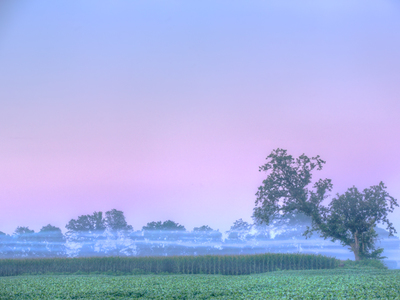
John Holliger
Providing commercial and business photography services in the Delaware and Columbus Ohio metro area.
My portfolio includes Ohio Wesleyan University, Delaware Building Systems, and Main Street Delaware. I specialize in advertising, retail stores, restaurants, business interiors and exteriors, portrait, architecture, and corporate events.
My commercial work is tailored for each client. My first consultation free.
During that consultation I will ask you about your project's scope, objectives, and any special needs you may have. We will develop a plan together.
I will consult with you by cell phone, email,or in person. All work is accomplished with a quick turnaround.
Call 740-360-0741 to set up your free Consultation.
John Holliger
​
http://www.photographybyjohnholliger.net/online-store.html
If you see an image you would like to purchase, please email me at
johnholliger@columbus.rr.com
Upcoming Events
Quiet Days Offered by John Holliger
1. Spiritual Practices for Elders to Consider
A. Introduction and path of the day
1. Quieting Music
2. Meditation time for focusing on our breathing, becoming present, here.
3. The genesis of this day; the story of a conversation between a 68 and an 80 year old.
4. What is it like to be an elder?
5. Three questions that will shape the day.
a. What have I wanted to try, and now with fewer responsibilities I can?
b. What do I want to lay down, to stop doing? Are they a distraction from my heart’s desire?
c. What am I enjoying now but I want to explore different ways?
6. Conversation: What are your expectations for today?
B. The design for each question.
Question One—What have I wanted to try, and now with fewer responsibilities, I can?
1. Quieting Music
2. Meditation time for focusing on our breathing and being here.
3. Making a beginning that invites us inward, exploring our interior landscape
4. Poetic readings/reflections that lead us deeper.
a. No Path, David Whyte
b. Sometimes, David Whyte
c. The Journey, David Whyte
5. Spiritual practice: Walking, and asking the mysteries and unknown presences for clues and threads to follow. Walking, Sauntering,
6. A Break for journaling, walking, asking, reflecting.
7. Returning to share, if we care to, what we are experiencing.
Question Two What do I want to stop doing because it is a distraction from my heart’s desire?
1. Quieting Music
2. Meditation time for focusing on our breathing and being here.
3. Poetic readings/reflections that lead us deeper.
a. Sweet Darkness, David Whyte
b. A Summer’s Day, Mary Oliver
c. What to Remember When Waking
4. Spiritual Practice: Listening, paying attention, then journaling what has catch your attention: morning pages written in a beautiful book
5. What is now past, obsolete, the Way Closing?
6. Break for walking, journaling, listening.
7. Returning to share, if we care to what we are experiencing.
Question Three What am I enjoying, but I want to approach it in different ways?
1. Quieting Music
2. Meditation time for focusing on our breathing and being here.
3. Poetic readings/reflections that lead us deeper; Believing Mirrors.
a. Mameen, David Whyte
b. Second Sight, David Whyte
c. Start Close In, David Whyte
4. Spiritual Practice: the Artist’s Date with herself.
5. Break for walking, journaling, listening
6. Returning to share, if we care to, what we are experiencing.
Making one new commitment to ourselves
“Peace” by Elizabeth Von Trapp
Concluding by 3 pm
2. Creating the Poem of Your Life
Through Nature’s Images, Poems, and Earth Songs
In this Day Apart we will signal a gentle truce with ourselves, so we may be ready for what comes to us about revising our lives, allowing our lives to unfold as the good poems they are already.
Through the poetry and life story of William Stafford, lovely images of the rhythms of nature, the lyrical songs of streams, frogs, birds, and whales, with meandering walks, and stillness, we will practice listening and looking for the poems and gifts that are unfolding within us.
“I think you create a good poem by revising your life… by living the kind of life that enables good poems to come about.” W.S.
“If you are writing and you get stuck, lower your standards and keep going. And my standards can get really low…” “When you are writing and it gets hard, don’t stop. It’s hard because you are doing something original.”
William Stafford, Dad
“To lower one’s standard comes from medieval warfare. It was a signal for a truce. To raise your standard meant to attack. To declare a truce as a writer is to be utterly ready for what comes.” Kim Stafford, Son
The Day's Schedule
Session 1. What brings us here? An opening of brief sharing by participants,
“My Life in Writing” reflection and Power Point by JH
Silent time to rest, to walk, to sit with one of nature’s icons and accompanying poem by William Stafford.
Session 2. “The Contrary Way William Stafford Invited Young Writers Forward”
Silent time to rest, to reflect with one of nature’s icons and accompanying poems by William Stafford, and/or to walk slowly as “walking meditation.”
Session 3. William Stafford’s early formation from his Quaker mother, then In the work camps for Conscientious Objectors during the Second World War..
Session 4. Conversation together, sharing our half-baked ideas maybe a hunch or two of the way forward, what we’ve begun to consider, or remaining silent if that is the better way.
Shalom
From the Arti Gras! Evaluations: “Wonderful blending of imagery, words, and sounds, an oasis for reflection. “John’s , inviting, facilitator/presenter. We received glowing praise for your workshop at Art Gras! from Amanda
Cushing, Director of Arti Gras! February 13, 2010, the Spirituality Network, Columbus.
3. Praying with Icons
Doorways to the Heart of the Beloved
Using several striking, ancient icons, interwoven with quieting music, brief teachings and stories of their flourishing but also the fanatics’ destruction of compelling icons, John invites us into new ways of praying, where gazing is prayer.
After an introduction which describes how light has been used by Rembrandt in the west, we will meet ancient icons of the east as doorways or gates, pointing beyond themselves to the beauty of the heart of the Beloved One, Light coming to us through these beautiful images in an entirely different way than the western tradition
We learn the symbolic and spiritual intent of several remarkable icons and the story of the anonymous monks who painted them. We will then practice gazing as prayer, with simple chants and a brief time of silence. We will rest with our companions, the Holy Trinity and the Christ, the saints, Mary the Theotokos ( bearer of God… We are all Theotokos, bearers of God ). Gazing is our prayer.
What participants have said
“This as the MOST amazing, valuable seminar I have been to in several years. The richness of the material, the flow and availability of contemplative time impacted me deeply.”
“I have a peace and understanding I didn’t have before. It was perfect.”
4. The Spirituality of Imperfection
The Potter and the Sycamore
What is this Spirituality of Imperfection?
How are some traditional potters actually terrific spiritual guides?
What wisdom about imperfection does the ancient sycamore tree have for us?
In this Day Apart we will explore the gifts and wisdom embedded within our imperfections; that our flaws themselves can lead us to the Center, our Essence, where Yahweh is.
In the first cycle we will take our cues for our own lives from the invitations of the thoughts of several unusual potters, who dare to write when they do not try to create “perfect” pots, but to follow the natural desire of the clay. Each will choose a pot they are drawn to hold.
In the second cycle we will consider the poetry of Wendell Berry, “The Sycamore”; and “I go Among Trees,” and David Whyte’s “The Faces of Braga”—where the carver follows the imperfections of the wood to the Center.
Several unusual, imperfect pieces of wood will be available to hold and sit with, followed by a time of walking, listening, writing, and sitting.
In the third cycle we will conclude with conversation. Here is how Svend Bayer describes the spirituality of imperfection:
If you look for perfection in my pots you will not find it. I look at them as you would on survivors. . . . maybe your oldest and dearest friends. Like them my pots have scars and blemishes, the signs of a life lived.
My pots have to be picked up, felt, turned over and around and examined.
Every time you look closely at them, they will tell you something new.
Pottery as spiritual practice, as selfless concentration, requires the abandonment of anxiety, and the perfection of skill to the point where it can be forgotten and one becomes absorbed in the tactile sensations of the process.
There is a profound nobility in all this beauty that can elevate our lives.”
The potter has been a spiritual guide for his little community for thousands of years; here the meek of the earth have simple, profound wisdom for our journey. And the wisdom of the trees, expressed by poets like Wendell Berry and David Whyte can open us in new and unexpected ways for the journey ahead.
We end with a reflection: “The Gift of Being Unfinished” and conversation.
5. Obstacles and Stepping Stones
Quieting Music: Alyna by Arvo Pärt
Silence
Three beautiful questions:
1. How would we describe the obstacles and stepping stones of our journey?
2. Each contains a trap. What have the traps been like?
3. Each holds an unexpected gift, an opening, a new direction. How are those gifts, new directions, unfolding in your life?
Obstacles.
Following a week of heavy rain, I was looking forward to the beauty of deeply saturated greens and the blackest of blacks in the forest trees at Conkle’s Hollow. I was “walking the stream” and came to the most beautiful obstacle. The stream was crisscrossed by several huge tree trunks that had fallen decades ago: a vivid red oak and a bright green moss covered maple soaked with rain. Their beauty was enhanced by the absence of spider webs and a covering of old leaves—washed away by the heavy rains. I could easily stoop below, or throw a leg through an opening, or clamber over the top. The rains had so washed away the spider webs and leaves, that these CLEAN obstacles were exceptionally beautiful.
Other times I push back vines to go forward, stoop under, or scrape my way over obstacles. I become covered with burrs, sticky seeds, spider webs, torn clothing, scratched up arms, and itchy mosquito bites. Obstacles in our lives can be just like that. But they also have something to reveal. Obstacles have hidden qualities.
They can divert us from what might harm us. At other times obstacles, like these trees, have amazing clarity from the start. They are strikingly lovely.
This exhibit and Day Apart will invite reflection on the several kinds of obstacles that cross our paths. Each has its unique message for us that we will hear when we pause, and look to see what we have come through. I often ask myself, “What just happened?”
Stepping Stones
When I was a kid I used to build dams by tossing large stones into streams. My own children, growing up on the Tankerhoosan steam quite naturally built dams across their stream as well. It was great fun. There’s a fantasy of control and power for kids in gathering rocks and creating a dam which created a lake in the stream. In a way we are rehearsing what is coming later in our lives.
Once our day’s fun is complete and after a few days have passed, the rocks can appear to be stepping stones across the stream. But the passing hiker who attempts to cross those rocks to the other side of the stream could experience as wet disaster.
Rocks not tossed bur deliberately placed as stable stepping stones to cross a stream are a great surprise to come upon. Still, I approach such stepping stones with caution because I know the waters keep moving around and past the rocks here and there, destabilizing their original placement. So I tap, tap, tap, and test each stone before putting my full weight and trust on them. Even with those precautions I ready myself to adjust quickly how I step onto those stones and swing my hips this way or that to avoid a wet splash down.
Splash, just like that…I have found myself in the stream holding my camera high in the air with one hand and stabilizing myself in wet mud with the other. I am quite a sight to behold and worth a good laugh.
It takes daring to move our weight forward from one stone onto the next in any part of our life. In this Day Apart we’ll reflect on that daring nature within us, when we must take that next step; the moments we miss-calculated what was beneath our feet and apparently stable; and those other times when what looked really iffy, turned out to be immovable and stable. We were so surprised because the risk worked out.
Obstacles and Stepping Stones
A Day Apart
1. How would we describe the obstacles and stepping stones of our journey?
2. Each contains a trap. What have the traps been like?
3. Each holds an unexpected gift, an opening, a new direction. How are those gifts, new directions, unfolding in your life?
John Holliger comes alive walking the Lake Erie shore, slogging through wetlands, learning the habitats of forests in Ohio, the stories the rocks are telling, watching the movement from starry nights to the first light of day.
A graduate of Oberlin College and Yale Divinity School, John is an Episcopal priest who served parishes in Connecticut and Ohio. Laying down that work at 58, John is a life-long self-taught nature photographer with an animated curiosity for how potters, painters, poets, musicians, craftsmen like farriers and wood bowl makers, and classic photographers approach their art—always on the creative edge, taking risks, asking “What’s next?”
John Holliger’s Studio and Gallery
70 Welshire Court
Delaware, Ohio 43015
740-360-0741
Button Up Gallery
23 North Sandusky Street
Delaware, Ohio 43015
johnholliger@columbus.rr.com
www.photographybyjohnholliger.net
Images
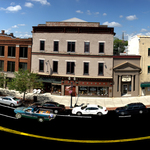
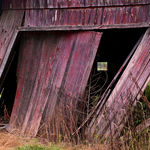
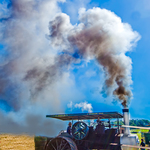
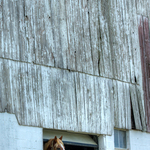
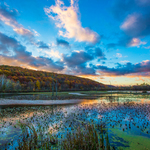
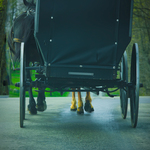
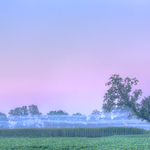
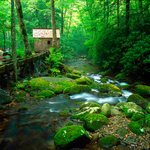
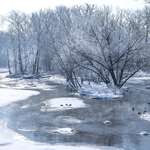
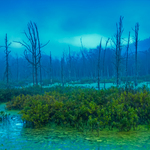
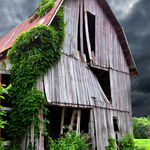
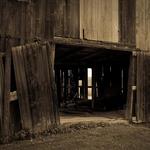
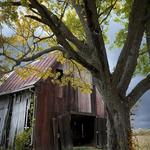

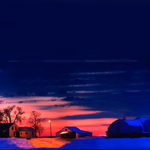
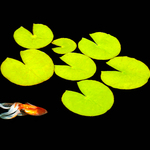
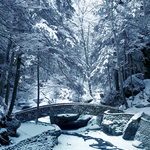
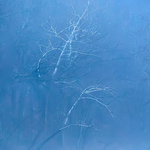
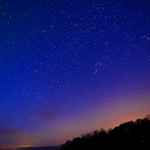
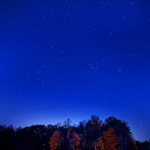
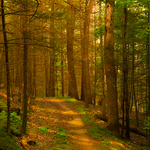
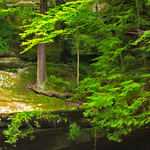
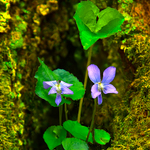
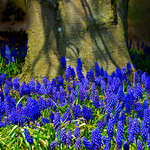
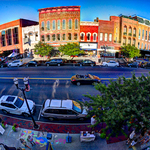

Artist Links
- I allow businesses to purchase or display my work.
- I am open to selling my work under payment plans.
- I am available for demonstrations.
- I offer classes.
